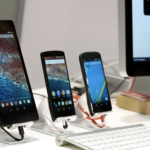In the ever-evolving marketing and advertising landscape, brands constantly search for innovative ways to engage with their target audience. Immersive technology has emerged as a game-changer, providing a powerful means to captivate and connect with consumers on a whole new level. With the advent of virtual reality (VR), augmented reality (AR), mixed reality (MR), and 360-degree video, brands are now able to create immersive experiences that leave a lasting impact on their customers. These technologies enhance engagement and open up brand storytelling and customer interaction possibilities.
Immersive technology refers to digital experiences that immerse the user in a simulated environment, often blurring the lines between the physical and digital worlds. One of the most promising elements of immersive technology is its ability to transport users to different places and experiences. This is particularly potent for brand engagement, as it allows consumers to interact with a product or service in previously impossible ways. Here are a few key ways in which immersive technology is revolutionizing brand engagement:
Virtual Product Try-On
For industries like fashion and cosmetics, AR and VR enable consumers to try on clothing, makeup, or accessories virtually. This hands-on experience makes the purchasing decision easier and more engaging. Brands like Sephora and IKEA have already integrated AR into their apps, allowing customers to see how products look in their environment.
Immersive Storytelling
Immersive technology provides brands with a dynamic platform for storytelling. They can create VR experiences that transport users into the heart of their brand’s narrative. This is a powerful tool for building an emotional connection with consumers and conveying the brand’s values. Immersive technology transforms a brand experience by offering consumers a dynamic and captivating way to engage with products and narratives.
Interactive Product Demonstrations
Brands can use AR and VR to offer immersive product demonstrations. These experiences go beyond traditional advertising by allowing consumers to explore a product’s features, benefits, and applications more interactively and engagingly.
Virtual Events and Experiences
Immersive technology has become an invaluable tool for hosting virtual events and experiences. From virtual trade shows to product launches in VR, brands can connect with a global audience in real-time, providing a level of engagement previously unattainable.
Gamification of Brand Engagement
Gamification is a powerful method for enhancing brand engagement, and immersive technology is the perfect platform for creating gamified experiences. Brands can develop AR-based games or VR simulations with rewards, challenges, and interactive elements tied to the brand’s message or product.
Enhanced Training and Learning
Brands can use immersive technology to educate and train their employees and customers. VR, in particular, is ideal for providing hands-on training experiences, enhancing product knowledge, and ensuring a higher level of engagement in the learning process.
Virtual Showrooms and Retail Spaces
Immersive technology enables brands to create virtual showrooms and retail spaces, providing customers with a virtual tour of their physical stores or a digital shopping experience. This can be particularly beneficial in a world where online shopping is rising.
Social Media Integration
Social media platforms are embracing augmented reality filters and effects, allowing brands to engage with their audiences on popular platforms like Instagram and Snapchat. These interactive filters create a buzz and encourage users to share their experiences with the brand.
The impact of immersive technology on brand engagement is undeniable, but it also comes with some challenges. The technology is still relatively new, and many consumers may not have access to the necessary devices or software. Additionally, there’s a learning curve for brands in terms of creating and implementing immersive experiences effectively.








